When George Sand died on her country estate in Nohant on 8 June 1876, her friend Viktor Hugo wrote: “I mourn a dead woman and salute an immortal!” He was proved right. In France, George Sand is still regarded as a national icon today: she wrote tirelessly, fought for the emancipation of women and pushed for social reforms. With her literary work, her political commitment and her courageous lifestyle, she became a symbol of freedom and equality. In her home country, she is revered as a political activist and influential voice in society. 2026 marks the 150th anniversary of her death. A journey to the most important George Sand sites.
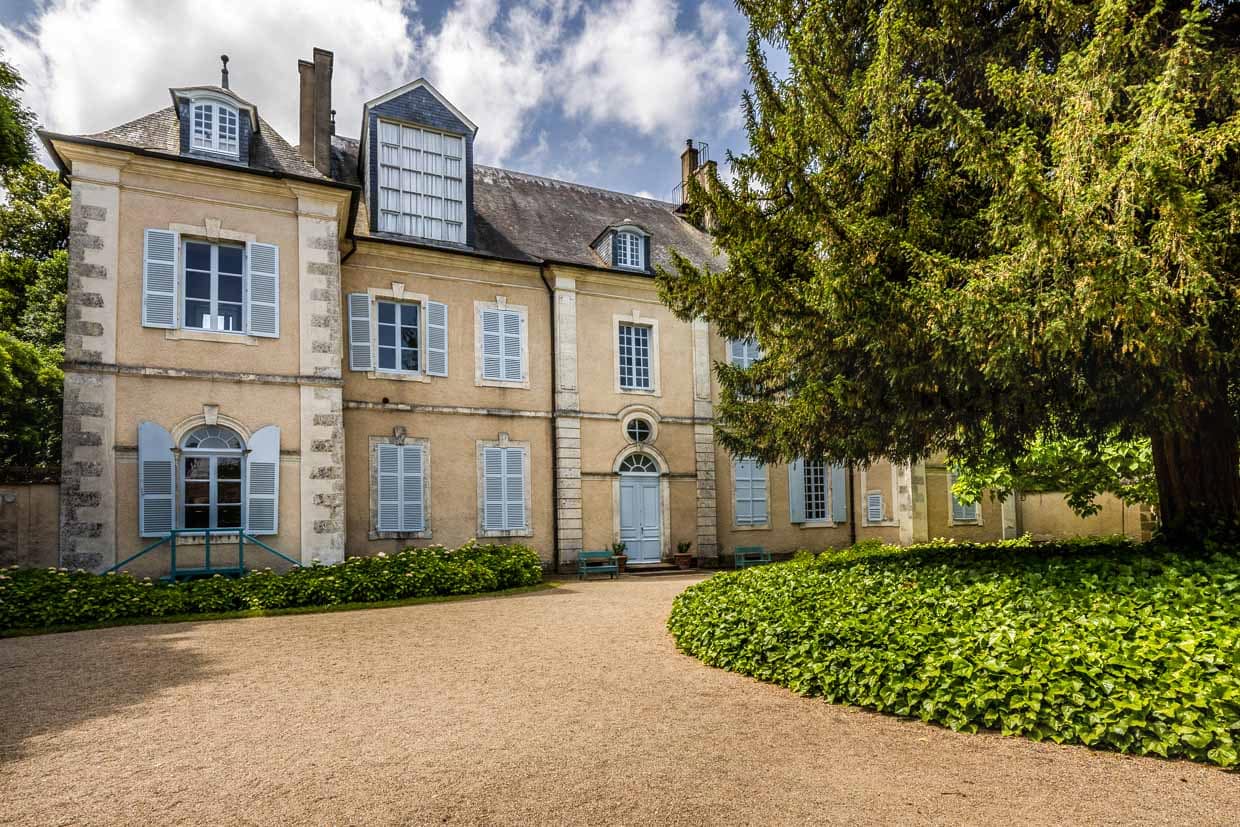
George Sand, born on 1 July 1804 in Paris, was actually called Amantine-Aurore-Lucile Dupin. As a married Baroness Dudevant, she was the mother of two children, mistress of Alfred de Musset, Frédéric Chopin and others, as well as friend and advisor to influential cultural and political figures. She left behind an impressive literary oeuvre. At the age of 27, she left her marriage, moved to Paris and from then on lived from writing. She chose her male pseudonym George Sand in order to escape the social restrictions placed on female authors. Her first novel Indiana was published in 1831. Dressed as a man, she fought for equality for women and created a multi-layered body of work. Over the course of her life, she wrote around a hundred more novels as well as travelogues and political texts, which made her famous far beyond France. George Sand became one of the most famous and controversial writers of the 19th century.

Abroad, George Sand is recognised above all as a romantic, rebellious writer and independent personality. Her literary work is appreciated, but her political engagement and her commitment to women’s rights are less recognised. In France, she is a symbol of social renewal; internationally, she remains above all a literary cult figure. In Germany, her travelogue A Winter in Mallorca is probably the best known. In it, she describes a journey she undertook in the winter of 1838 with her partner Frédéric Chopin and their two children. The trip turned into a fiasco: instead of recovery for the sickly Chopin and her son with a lung condition, they encountered hostile Mallorcans, bad weather and draughty accommodation. In her book, she is not sparing in her criticism of the locals. The book has become a widely read classic of travel literature.
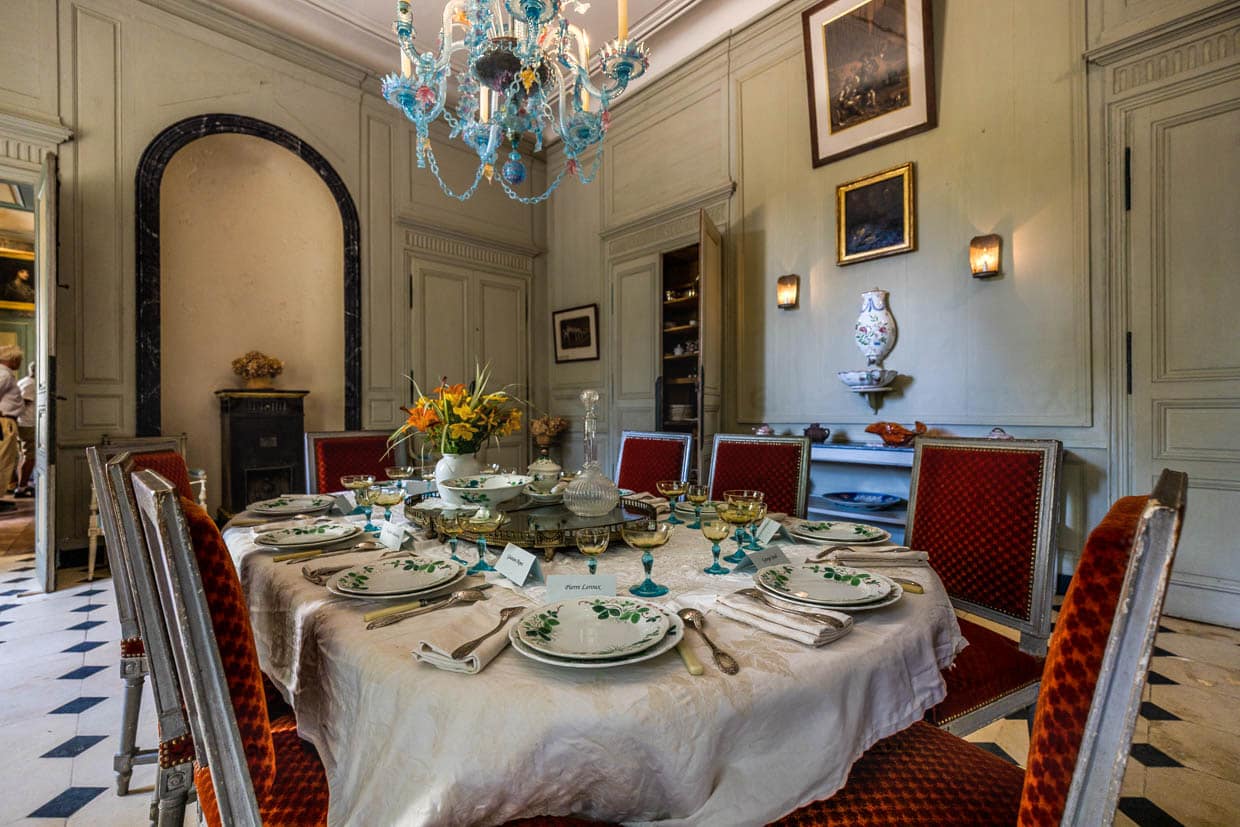
The Nohant estate – meeting place for the Parisian art scene
The Nohant estate in Berry was George Sand’s retreat and source of strength. Here she received her Parisian friends, including many important artists and intellectuals of the 19th century. Her circle included Honoré de Balzac, Alexandre Dumas, Eugène Delacroix, Franz Liszt, Marie d’Agoult, Victor Hugo and Gustave Flaubert. The house can only be visited as part of a guided tour, which is only offered in French. The original furnishings, numerous family portraits, the puppet theatre, the well-tended garden, Chopin’s composing room and Sand’s writing room give a vivid impression of George Sand’s life in the country.
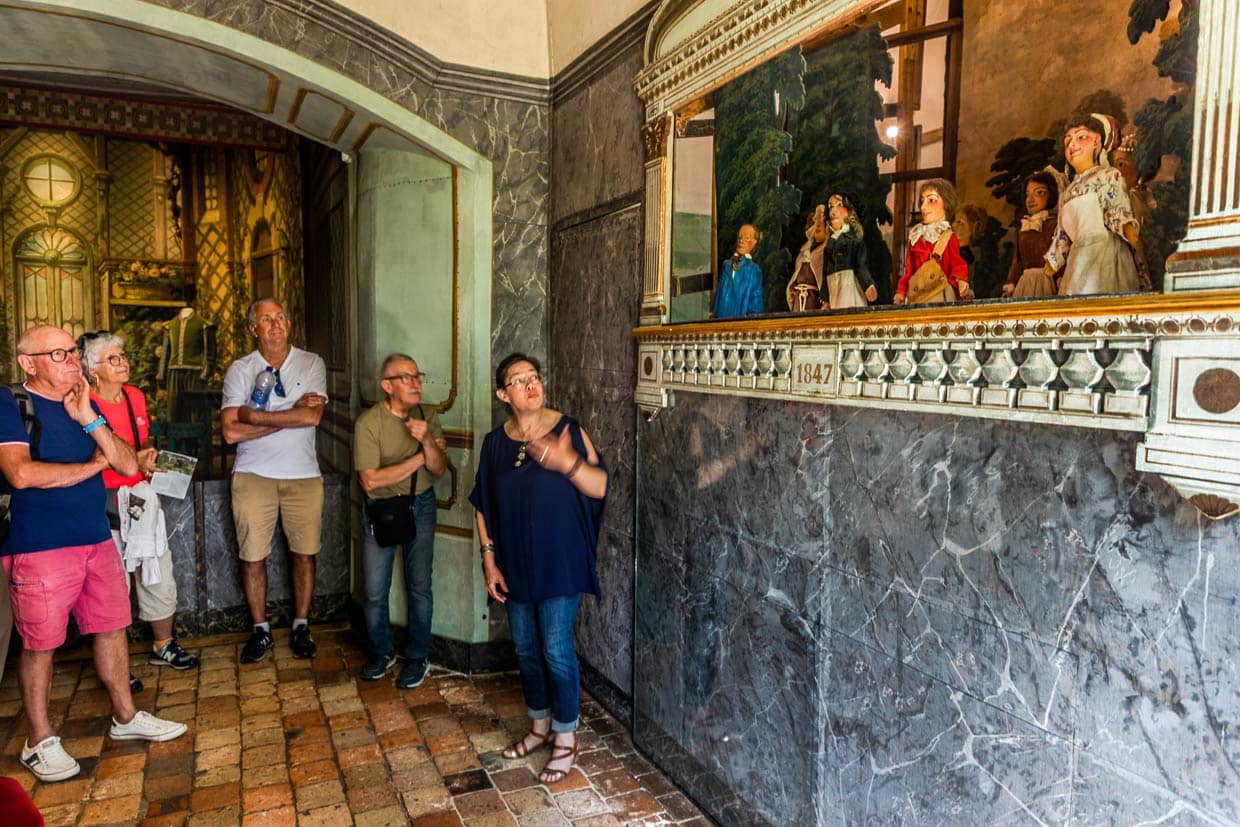
George Sand and the lady with the unicorn
On the 150th anniversary of George Sand’s death, a carpet is being woven in her honour. This homage to George Sand could hardly be more fitting, as she herself discovered an extraordinary series of medieval tapestries during her lifetime. In addition to her country house in Nohant, Boussac Castle is one of the places of pilgrimage for her admirers. However, the story of this discovery, which took place on a rainy morning in 1841, remains untold during a guided tour of the castle. Instead, a replica of the carpet hangs inconspicuously on the back wall of a fireplace, decorated with a kitschy unicorn. Shortly after their discovery, the six original carpets were brought to Paris as important works of art.
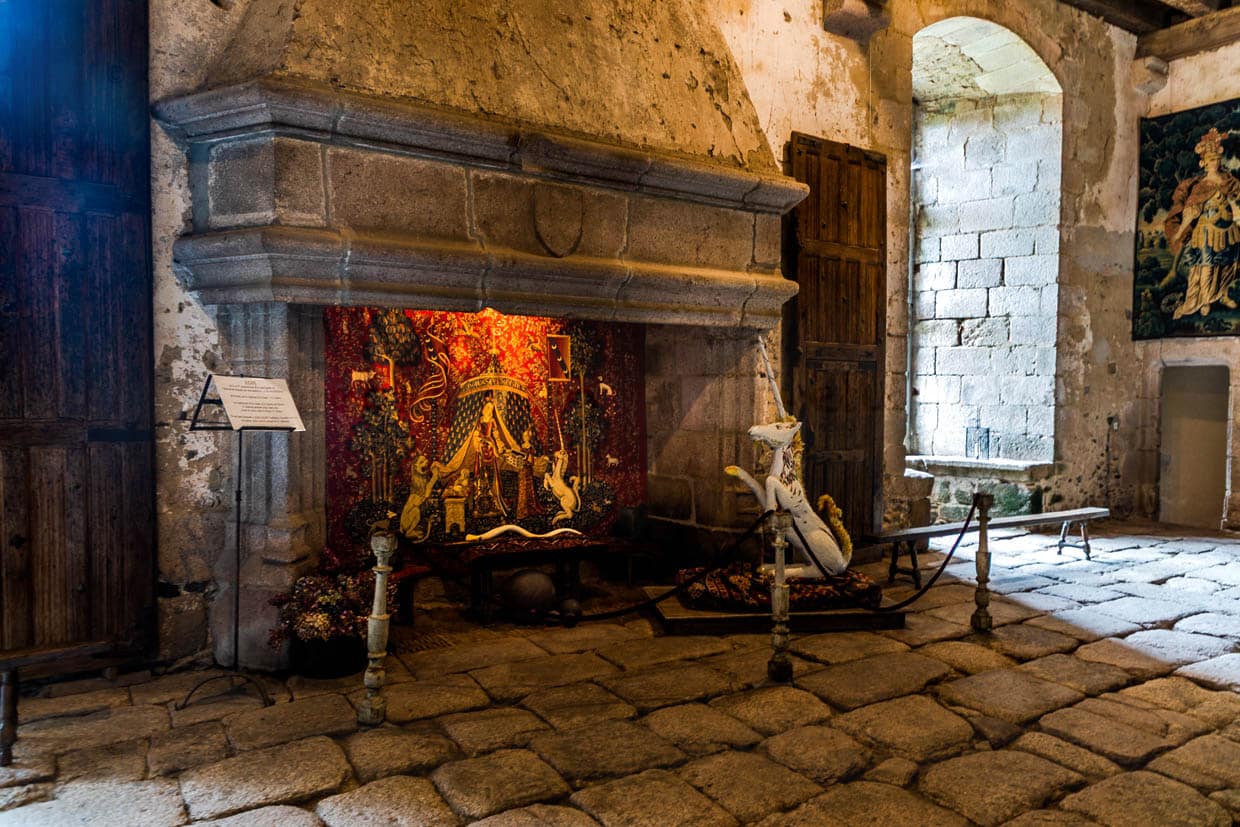
The discovery of the Lady with the Unicorn tapestry is said to have happened as follows: In 1841 on a very rainy morning – and this detail is important – because had it not been raining – the following discovery would not have occurred: On entering, George Sand scuffed her muddy boots on the carpet at the entrance and became aware of a medieval pattern. She asked where the carpet came from, but no one in the house had an answer.
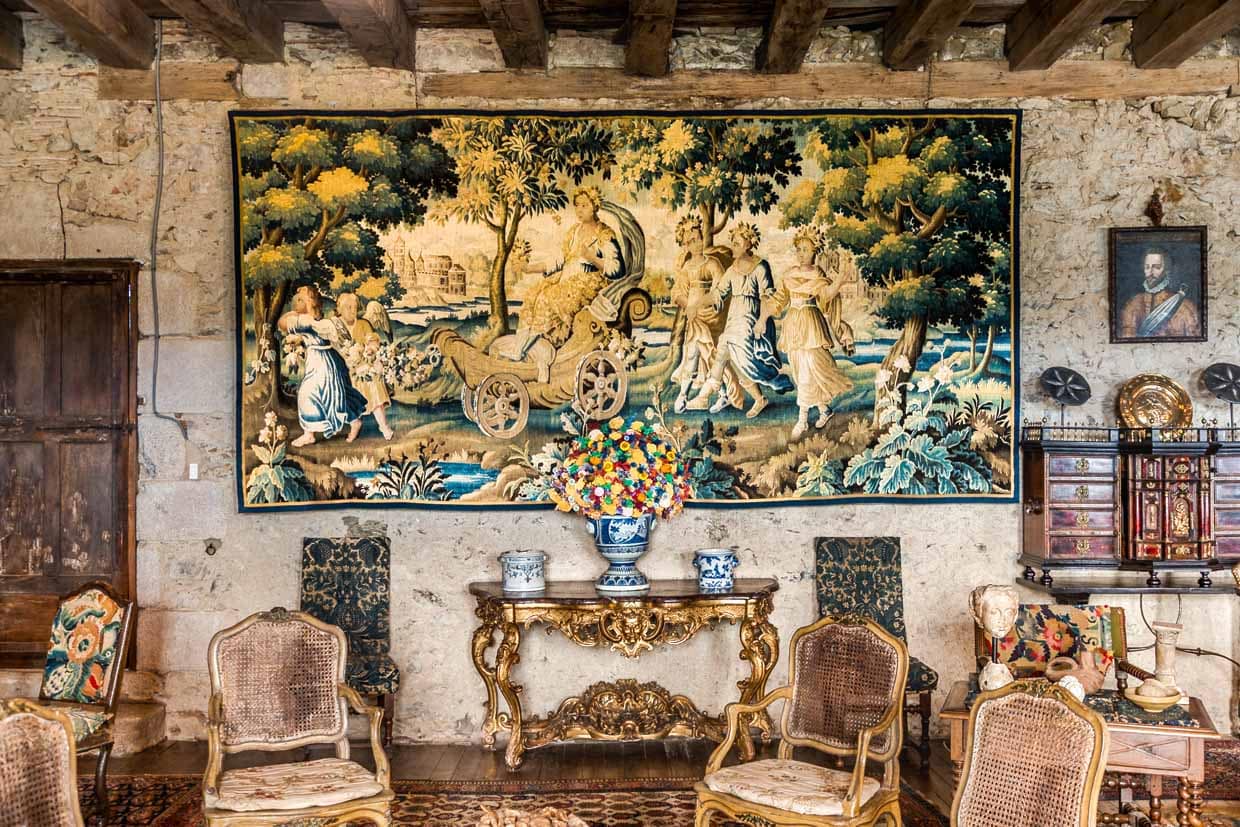
Sand searched the upper floors of the castle and discovered five other carpets with similar designs that were in better condition. She immediately recognised their value and suspected that they were tapestries from the Middle Ages. To confirm her discovery, she turned to Prosper Mérimée, the “Inspecteur des Monuments historiques” at the time – with whom she had had an affair a few years earlier. Mérimée, still full of admiration for Sand, immediately travelled to Boussac. He confirmed the extraordinary significance of the carpets and immediately had them classified as a “Monument historique”. Today, the famous cycle The Lady with the Unicorn can be admired in the Musée de Cluny in Paris.
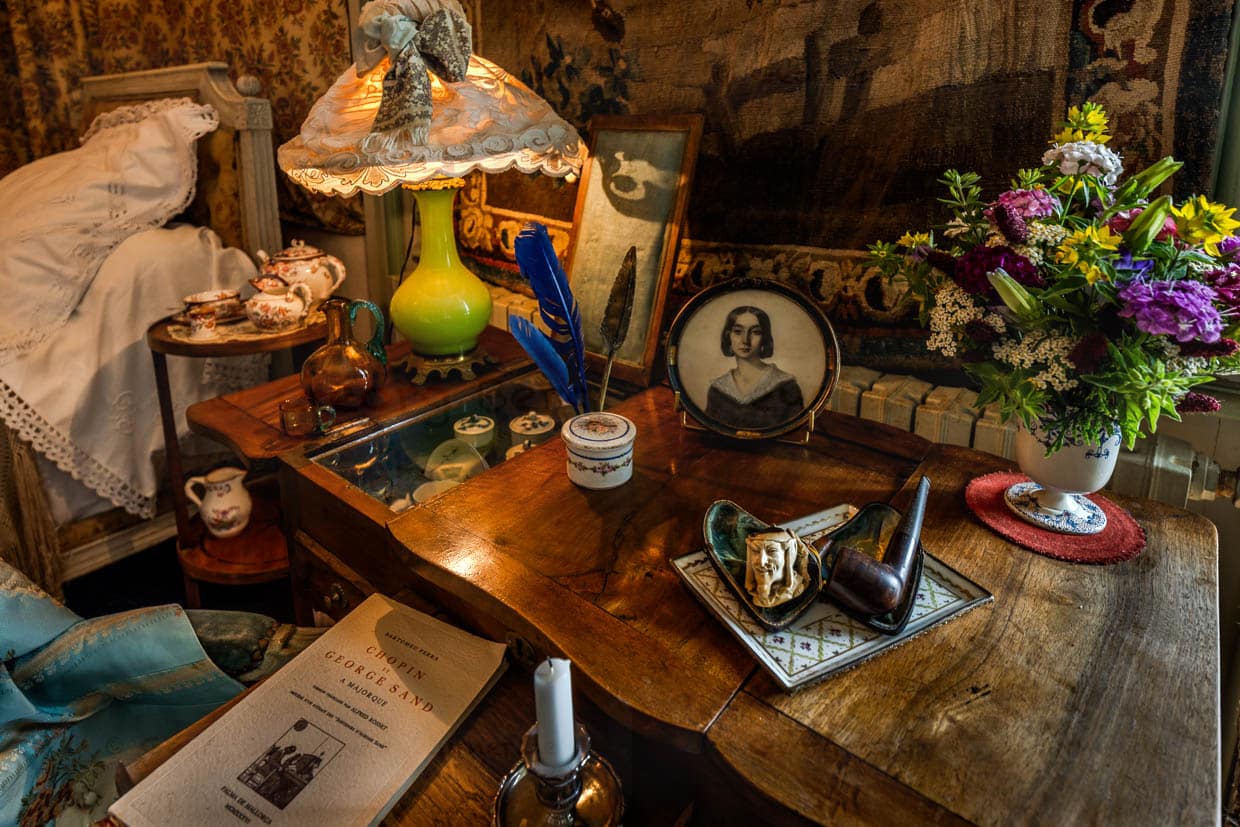
After her discovery, George Sand became a regular guest at Boussac Castle in the years that followed. Today, visitors can also visit the writer’s room on guided tours through 40 opulently furnished rooms. Numerous carpets from past eras hang on the old castle walls, complemented by the sometimes bizarre collections with which Lucien and Bernadette Blondeau have furnished the castle since the 1960s.
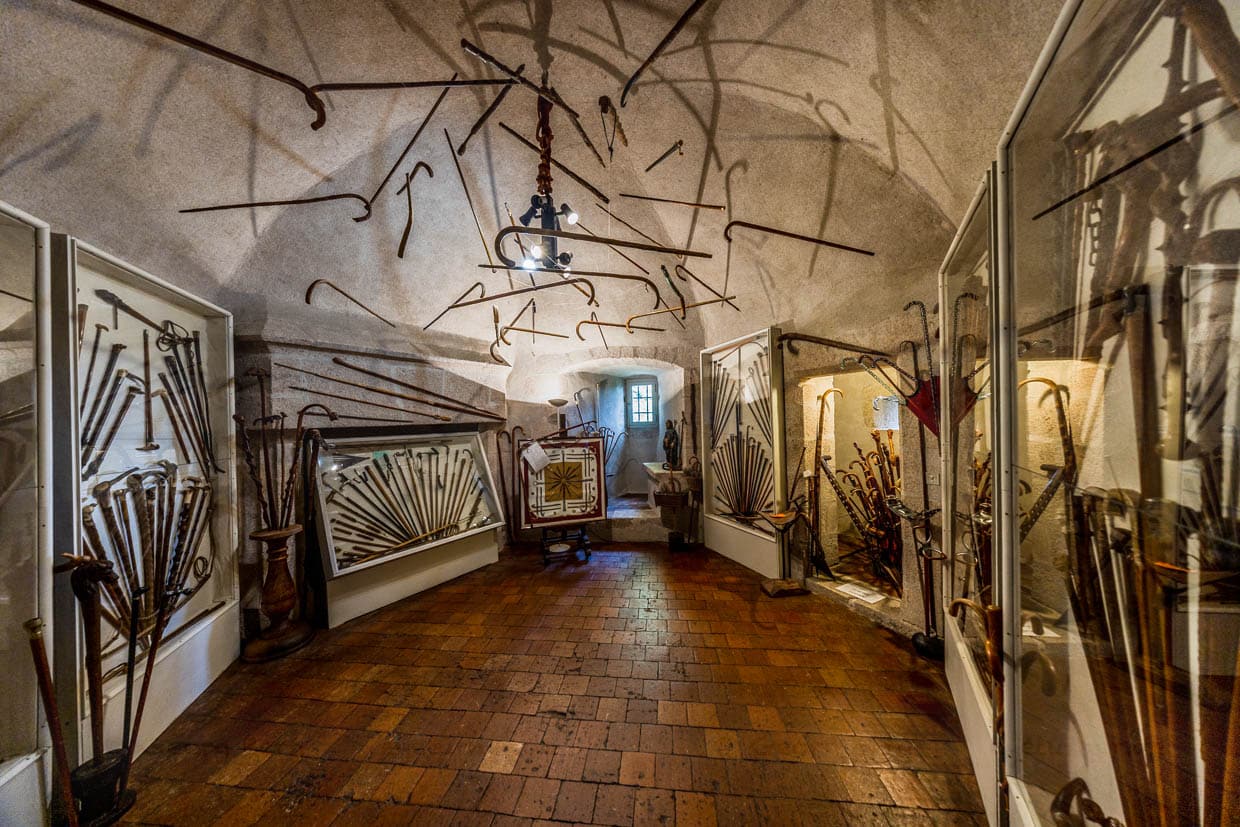
Nohant, Boussac and the Pierres Jaumâtres
Back to the country house in Nohant. Anyone who wants to follow in the footsteps of the writer in 2026, the anniversary year, should not only visit her home in Nohant, but also Boussac Castle and the Pierres Jaumâtres. This natural monument in the Creuse region, where she often walked with Frédéric Chopin, was included in her 1844 novel Jeanne. To link past and present, the Cité internationale de la Tapisserie in Aubusson will be exhibiting the monumental tapestry Hommage à George Sand from June 2026.
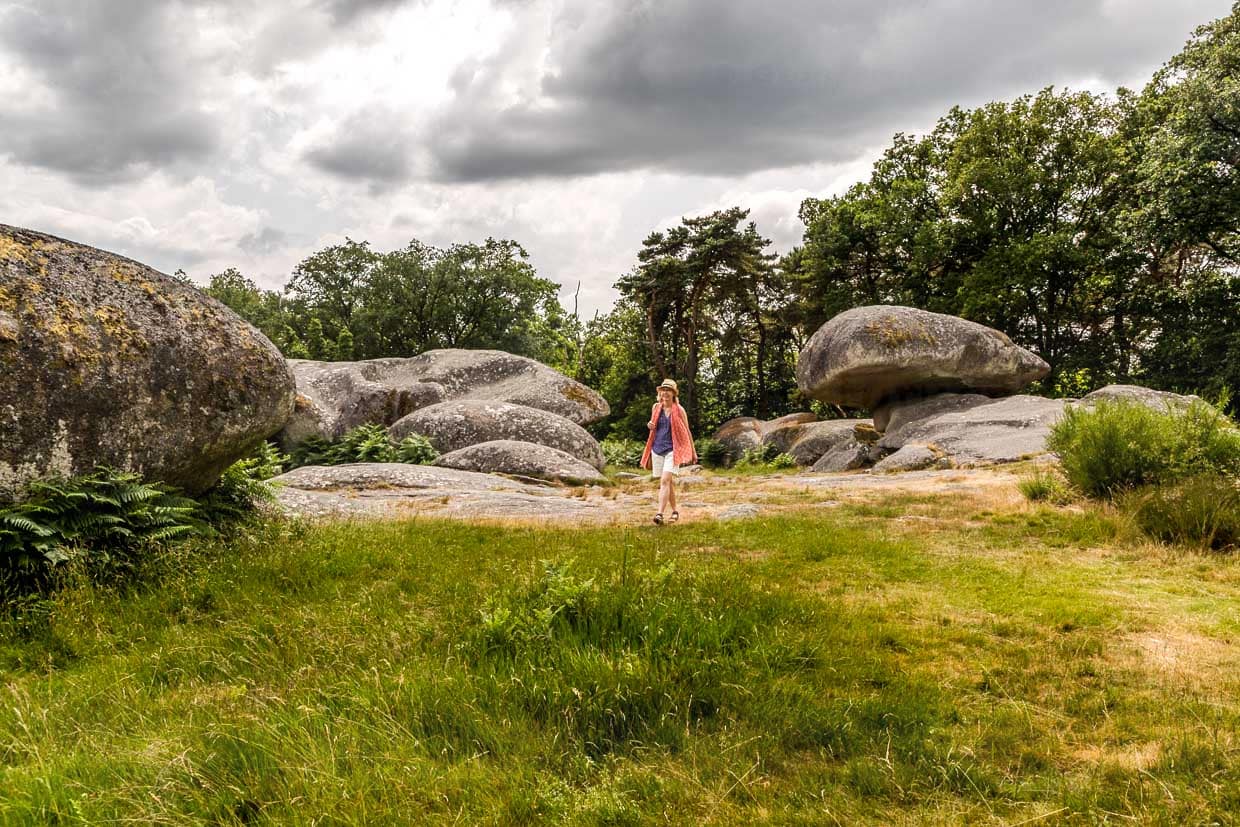
In her final years, George Sand formed a close friendship with Gustave Flaubert. Her surviving letters are a moving testimony to the history of art. When Sand died on 8 June 1876, Flaubert wrote simply: “I miss her.” At the time, Victor Hugo wrote with foresight: “I mourn a dead woman and greet an immortal!”

Highlights in Nouvelle-Aquitaine
The Charente winds its way through the French region of Nouvelle-Aquitaine for 380 kilometres. Its course leads from the mountainous headwaters over rolling hills and vineyards to the maritime floodplains at the estuary. From Angoulême, the French capital of comics, the river is navigable all the way to the Atlantic at Rochefort. It was once the main transport route for cognac production. Today, cognac houses and winegrowers invite you to take part in spirit tourism, while cycle paths such as the Flow Vélo take you past picturesque villages, old stone bridges, a rare floating ferry, water mills, castles and the historic centre of Angoulême. The Charente is still an insider tip, as it is one of the most unspoilt river landscapes in France: hardly any mass tourism, but plenty of nature, tranquillity and enjoyment. The small island of Aix was once a bulwark to protect the Charente estuary from enemy fleets and is now a popular destination for a day trip to the sea. There is also plenty to discover in Nouvelle-Aquitaine away from the Charente. For example, some skewered plate art made us think outside the box once again. The city of Poitiers, halfway between Paris and Bordeaux, was the centre of power in the Middle Ages and offers immersive cinema at the Futuroscope leisure park. The city of Limoges is famous for its French porcelain, and a tour of the city provides an insight into the art of porcelain making. There are also great museums dedicated to the history of porcelain art . The journey continues to the Creuse and Berry region. It is the home of the writer George Sand and the cradle of tapestry in France. In A Carpet for George Sand, the two themes are linked. The Cité internationale de la Tapisserie in Aubusson shows that carpets are not the dusty art of bygone days.
The research trip was supported by Nouvelle-Aquitaine Tourism and Creuse Tourisme


